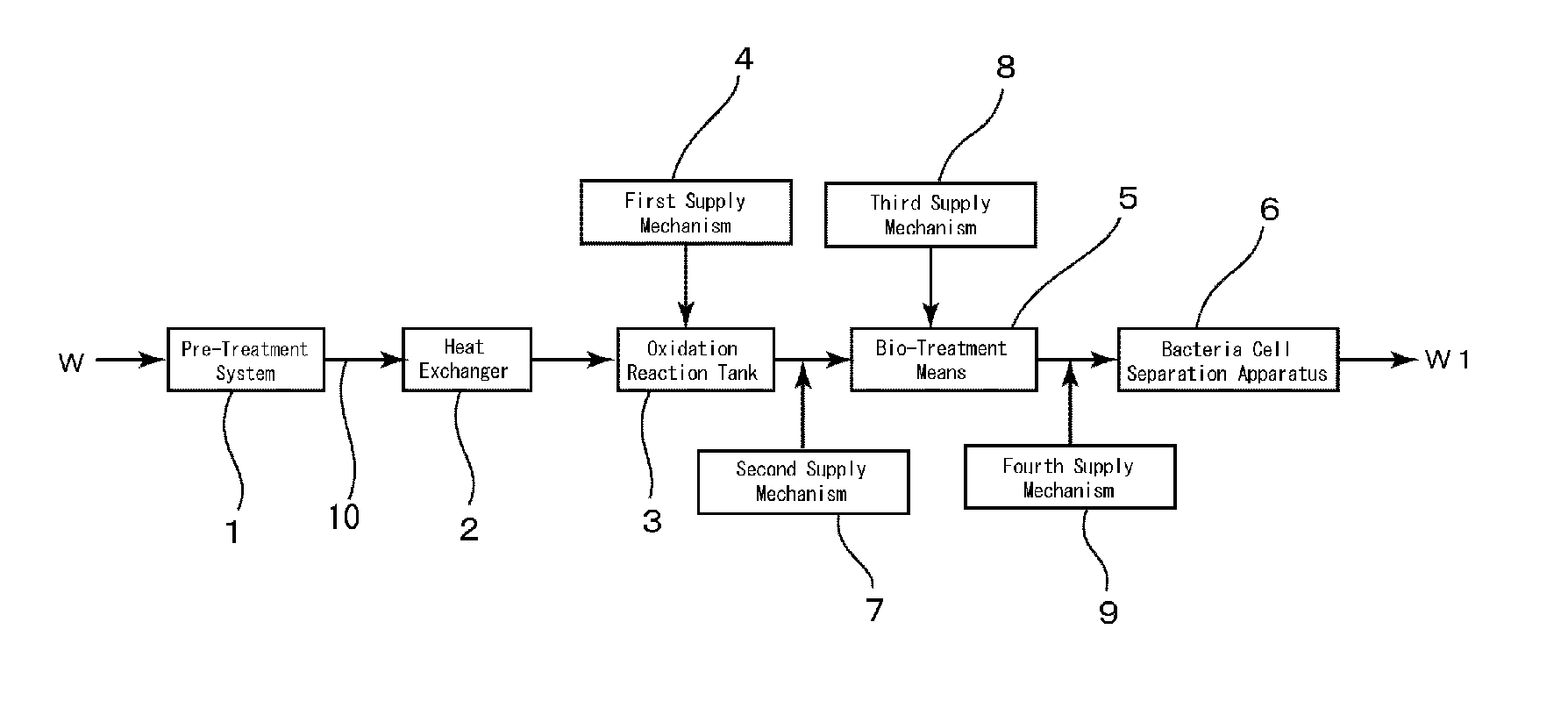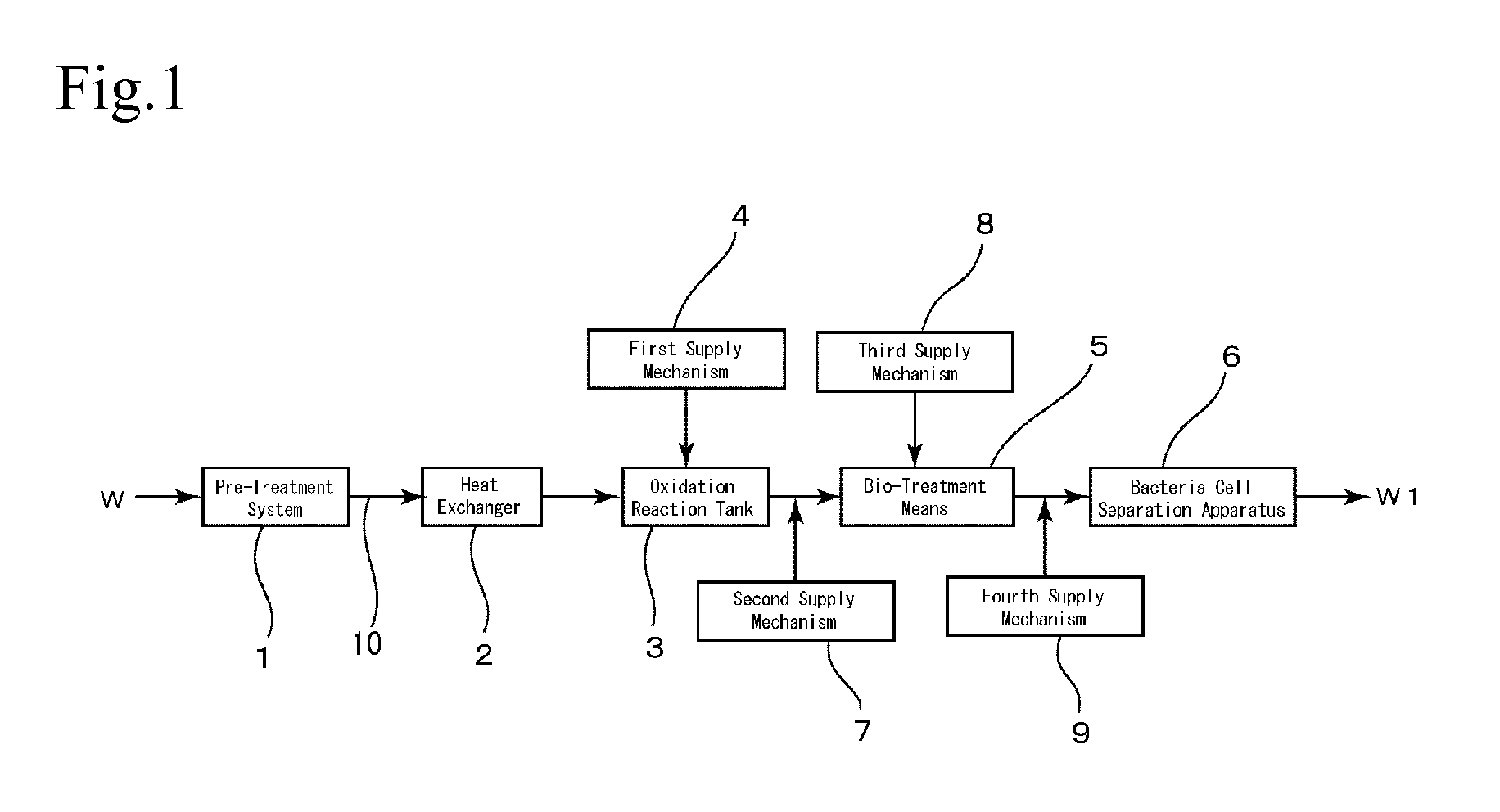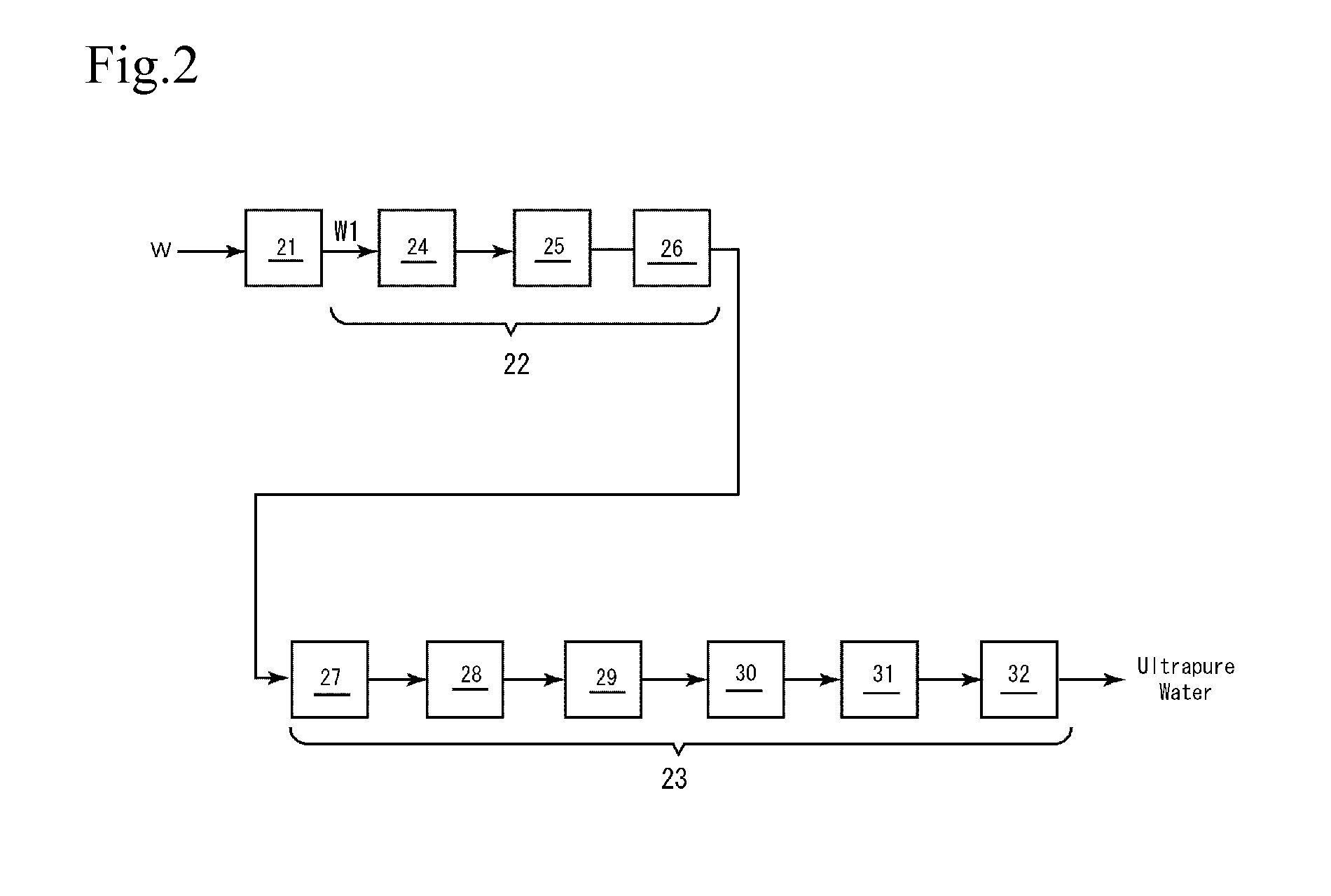Water treatment method and ultrapure water producing method
a technology of ultrapure water and treatment method, which is applied in the direction of biological water/sewage treatment, multi-stage water/sewage treatment, sustainable biological treatment, etc., can solve the problem of affecting the content of toc components, and achieve the effect of high-purity ultrapure water production
- Summary
- Abstract
- Description
- Claims
- Application Information
AI Technical Summary
Benefits of technology
Problems solved by technology
Method used
Image
Examples
example 1
Oxidation Treatment and Bio-Treatment
[0069]Based on the flowcharts shown in FIG. 1 and FIG. 2, as raw water W (simulated raw water), what obtained by adding a proper amount of reagent urea (made by Kishida Chemical Co., Ltd.) to city water (water in Nogi-town) in accordance with need was used. In the present example, because city water was used as the raw water W, a treatment equivalent to the pre-treatment was already done in a water purifying plant, no pre-treatment was performed.
[0070]The oxidation treatment was performed by adding sodium bromide (NaBr, made by Kishida Chemical Co., Ltd.) in an amount of 10 mg / L and sodium hypochlorite (made by Kishida Chemical Co., Ltd.) in an amount of 3 mg / L in the reaction tank with a residence time of 30 minutes. Note that pH in the oxidation treatment was left to nature and no pH adjustment was made. The pH in the oxidation treatment was about 8.
[0071]Bio-treatment was performed by letting water flow through a packed tower, wherein 10 L of ...
example 2
[0084]The flowcharts shown in FIG. 1 and FIG. 2 were used and, as raw water W, what obtained by adding a proper amount of reagent urea (made by Kishida Chemical Co., Ltd.) to city water (water in Nogi-town: average urea concentration of 10 μg / L, average TOC concentration of 500 μg / L) in accordance with need was used.
[0085]As a bio-treatment means 12, one having as a fixed bed a cylinder container filled with organism carrier, 2 L of granular activated carbon (made by Kurita Water Industries Ltd. “Kuricoal WG160, 10 / 32 mesh”), was used. As the granular activated carbon of the bio-treatment means 12, reagent urea was acclimatized and those already exhibited urea decomposing capability were extracted in an amount of 0.6 L from a packed tower and mixed with 1.4 L of new carbon for use.
[0086]First, city water (not added with reagent urea) was added with urea in an amount of about 100 mg / L to prepare raw water W (simulated raw water). Since a water temperature of the raw water W was 13 to...
example 3
[0095]In the example 2, other than adding sodium acetate instead of ammonium chloride as an ammoniac nitrogen source on a steady basis to attain a TOC concentration of about 0.5 mg / L (in terms of carbon), a water passing test was performed in the same way as in the example 2 and a urea concentration was analyzed for 50 days, the results are shown together in FIG. 3.
[0096]As is clear from FIG. 3, from the next day of start adding sodium acetate (8 days from the start of water passing), a gradual decline of urea was observed and, after that, a urea concentration of the biologically treated water became stable at 7 to 20 μg / L.
PUM
 Login to View More
Login to View More Abstract
Description
Claims
Application Information
 Login to View More
Login to View More - R&D
- Intellectual Property
- Life Sciences
- Materials
- Tech Scout
- Unparalleled Data Quality
- Higher Quality Content
- 60% Fewer Hallucinations
Browse by: Latest US Patents, China's latest patents, Technical Efficacy Thesaurus, Application Domain, Technology Topic, Popular Technical Reports.
© 2025 PatSnap. All rights reserved.Legal|Privacy policy|Modern Slavery Act Transparency Statement|Sitemap|About US| Contact US: help@patsnap.com



